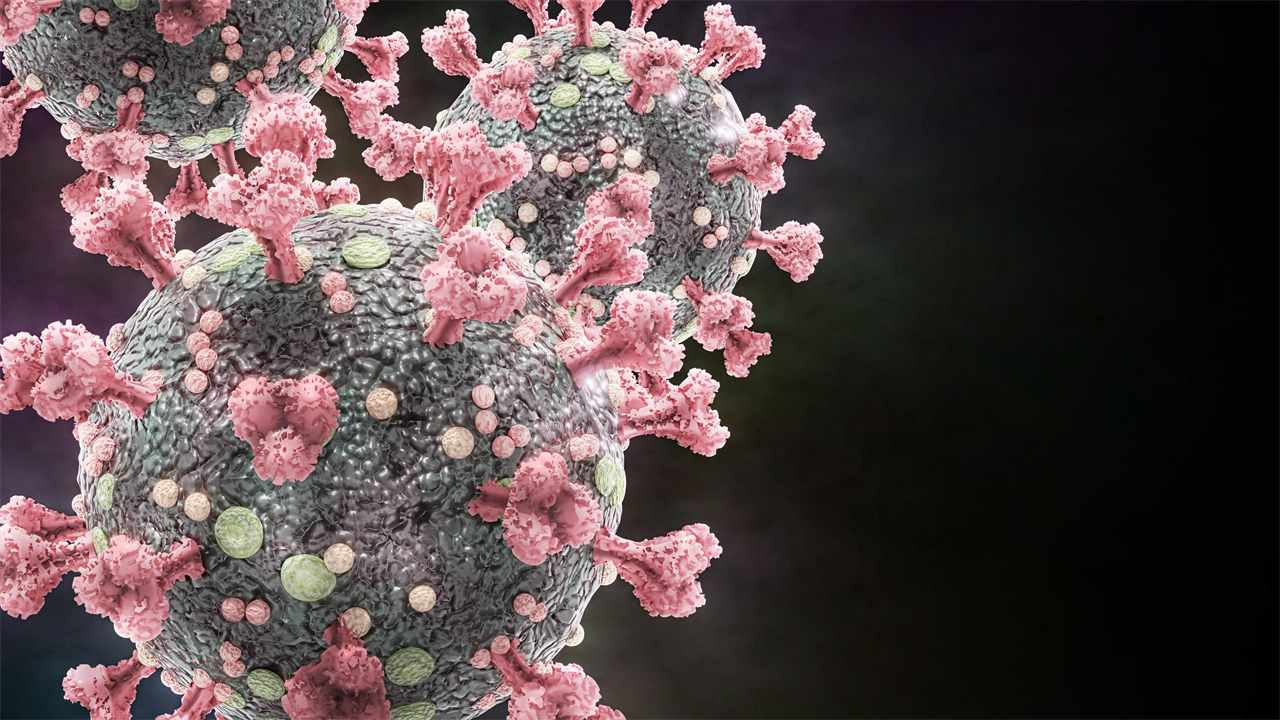Scientists Identify Human Genes That Fight SARS-CoV-2 Infection
0 View
Share this Video
- Publish Date:
- 16 April, 2021
- Category:
- Covid
- Video License
- Standard License
- Imported From:
- Youtube
Tags

Microscopic view of coronavirus. Credit: Dotted Yeti
Research indicates interferon stimulating genes that control SARS-CoV-2 replication.
Scientists at Sanford Burnham Prebys have identified a set of human genes that fight SARS-CoV-2 infection, the virus that causes COVID-19. Knowing which genes help control viral infections can help researchers understand factors influencing disease severity and also suggest potential therapeutic options. The genes in question are related to interferons, the body’s first virus fighters.
The study is published in the journal Molecular Cell.
“We wanted to gain a better understanding of the cellular response to SARS-CoV-2, including what drives a strong or weak response to infection,” said Sumit K. Chanda, Ph.D., professor and director of the Immunity and Pathogenesis Program. at Sanford Burnham Prebys and lead author of the study. “We have gained new insights into how the virus is exploiting the human cells it invades, but we are still looking for the Achilles’ heel so that we can develop optimal antivirals.”
Shortly after the onset of the pandemic, clinicians found that a weak interferon response to SARS-CoV-2 infection resulted in some of the more severe cases of COVID-19. This knowledge led Chanda and his colleagues to search for the human genes activated by interferons, known as interferon-stimulated genes (ISGs), that work to limit SARS-CoV-2 infection.
Based on knowledge obtained from SARS-CoV-1, the virus that caused a deadly, but relatively short, outbreak of disease from 2002 to 2004, and knowing it was similar to SARS-CoV-2, the researchers were able to develop laboratory tests. experiments to identify the ISGs that control viral replication in COVID-19.
“We found that 65 ISGs controlled SARS-CoV-2 infection, including some that suppressed the virus’s ability to enter cells, some that suppressed the production of the RNA that is the virus’s lifeblood, and a cluster of genes that inhibited the production of the virus, ”says Chanda.“ Also of great importance was the fact that some ISGs showed control over unrelated viruses, such as seasonal influenza, West Nile and HIV, leading to AIDS leads “.
“We identified eight ISGs that inhibited both SARS-CoV-1 and CoV-2 replication in the subcellular compartment responsible for protein packaging, suggesting that this vulnerable site could be exploited to clear viral infections,” says Laura Martin- Sancho, Ph.D. , a senior postdoctoral fellow in the Chanda lab and lead author of this study. “This is important information, but we still need to learn more about the biology of the virus and investigate whether genetic variability within these ISGs correlates with the severity of COVID-19.”
As a next step, the researchers will look at the biology of SARS-CoV-2 variants that continue to evolve and threaten vaccine efficacy. Martin-Sancho notes that they have already started collecting variants for laboratory research,
“It is vital that we do not take our foot off the pedal in fundamental research efforts as vaccines help control the pandemic,” Chanda concludes. “We’ve gotten this far so quickly thanks to investment in basic research at Sanford Burnham Prebys and elsewhere, and our continued efforts will be especially important if, not when, another virus outbreak occurs.”
Reference: “Functional Landscape of SARS-CoV-2 Cellular Restriction” By Laura Martin-Sancho, Mary K. Lewinski, Lars Pache, Charlotte A. Stoneham, Xin Yin, Mark E. Becker, Dexter Pratt, Christopher Churas, Sara B. Rosenthal, Sophie Liu, Stuart Weston, Paul D. De Jesus, Alan M. O’Neill, Anshu P. Gounder, Courtney Nguyen, Yuan Pu, Heather M. Curry, Aaron L. Uncle, Lisa Miorin, Ariel Rodriguez-Frandsen, Fan Zheng, Chunxiang Wu, Yong Xiong, Matthew Urbanowski, Megan L. Shaw, Max W. Chang, Christopher Benner, Thomas J. Hope, Matthew B. Frieman, Adolfo García-Sastre, Trey Ideker, Judd F. Hultquist, John Guatelli and Sumit K. Chanda, April 13, 2021, Molecular Cell.
DOI: 10.1016 / j.molcel.2021.04.008
Other authors of the study are Lars Pache, Anshu P. Gounder, Courtney Nguyen, Yuan Pu, Heather M. Curry, Paul D. De Jesus, Ariel Rodriguez-Frandsen, and Xin Yin at Sanford Burnham Prebys. Other authors include Mary K. Lewinski, Charlotte A. Stoneham, Aaron L. Uncle, and John Guatelli at the University of California San Diego and the VA San Diego Healthcare System; Mark Becker, Thomas J. Hope, and Judd F. Hultquist at Northwestern University Feinberg School of Medicine; Dexter Pratt, Christopher Churas, Sara B. Rosenthal, Sophie Liu, Fan Zheng, Max W. Chang, Christopher Benner, Trey Ideker, and Alan M. O’Neill at the University of California San Diego; Lisa Miorin, Matthew Urbanowski, Megan L. Shaw and Adolfo García-Sastre at the Icahn School of Medicine on Mount Sinai; Stuart Weston and Matthew B. Frieman at the University of Maryland School of Medicine; and Chunxiang Wu and Yong Xiong at Yale University.
Research was supported by DoD grants W81XWH-20-1-0270; DHIPC: U19 AI118610; and Fluomics / NOSI: U19 AI135972. It was also supported by generous philanthropic donations from Dinah Ruch and Susan & James Blair, from the JPB Foundation, the Open Philanthropy Project (research grant 2020-215611 (5384)), and anonymous donors. Additional support has been provided by DARPA grant HR0011-19-2-0020 and by CRIP (Center for research on Influenza Pathogenesis), a NIAID-funded Center of Excellence for Influenza Research and Surveillance (CEIRS, contract # HHSN272201400008C). In addition, this work was supported by the following fellowships at Northwestern University Feinberg School of Medicine: a CTSA Complement to NCATS: UL1 TR002389; a CTSA supplement to NUCATS with the generous support of the Dixon family: UL1 TR001422; and a cancer center supplement: P30 CA060553. Additional support was provided by the following grant to JG at UC San Diego: NIH grant R37AI081668. This work was also supported by a generous grant from the James B. Pendleton Charitable Trust.










